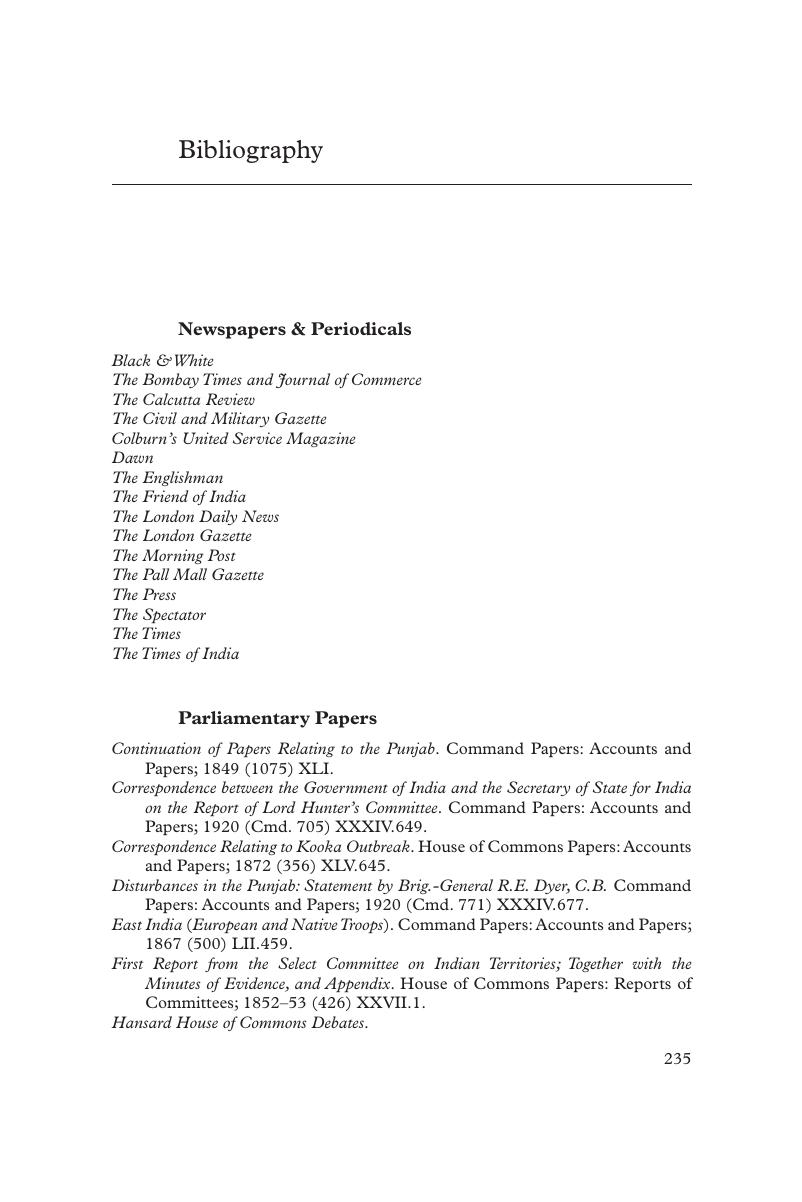Book contents
- The Insecurity State
- The Insecurity State
- Copyright page
- Contents
- Figures
- Acknowledgements
- Abbreviations and a Note on Style
- Maps
- Introduction: Fear, Panic, and the Violence of Empire
- 1 Colonial Insecurity in Early British India, 1757–1857
- 2 Re-Assessing the ‘Garrison State’: Pacification and Colonial Disquiet in Punjab
- 3 Law, the Punjab School, and the ‘Kooka Outbreak’ of 1872
- 4 Frontier Terror and the Murderous Outrages Act of 1867
- 5 Imperial Recruiting and Imperial Anxieties, 1870–1920
- Conclusion: Colonial Vulnerability and the Insecurity of Empire
- Epilogue: The Insecurity State Today
- Bibliography
- Index
- References
Bibliography
Published online by Cambridge University Press: 27 July 2017
- The Insecurity State
- The Insecurity State
- Copyright page
- Contents
- Figures
- Acknowledgements
- Abbreviations and a Note on Style
- Maps
- Introduction: Fear, Panic, and the Violence of Empire
- 1 Colonial Insecurity in Early British India, 1757–1857
- 2 Re-Assessing the ‘Garrison State’: Pacification and Colonial Disquiet in Punjab
- 3 Law, the Punjab School, and the ‘Kooka Outbreak’ of 1872
- 4 Frontier Terror and the Murderous Outrages Act of 1867
- 5 Imperial Recruiting and Imperial Anxieties, 1870–1920
- Conclusion: Colonial Vulnerability and the Insecurity of Empire
- Epilogue: The Insecurity State Today
- Bibliography
- Index
- References
Summary

- Type
- Chapter
- Information
- The Insecurity StatePunjab and the Making of Colonial Power in British India, pp. 235 - 254Publisher: Cambridge University PressPrint publication year: 2017

